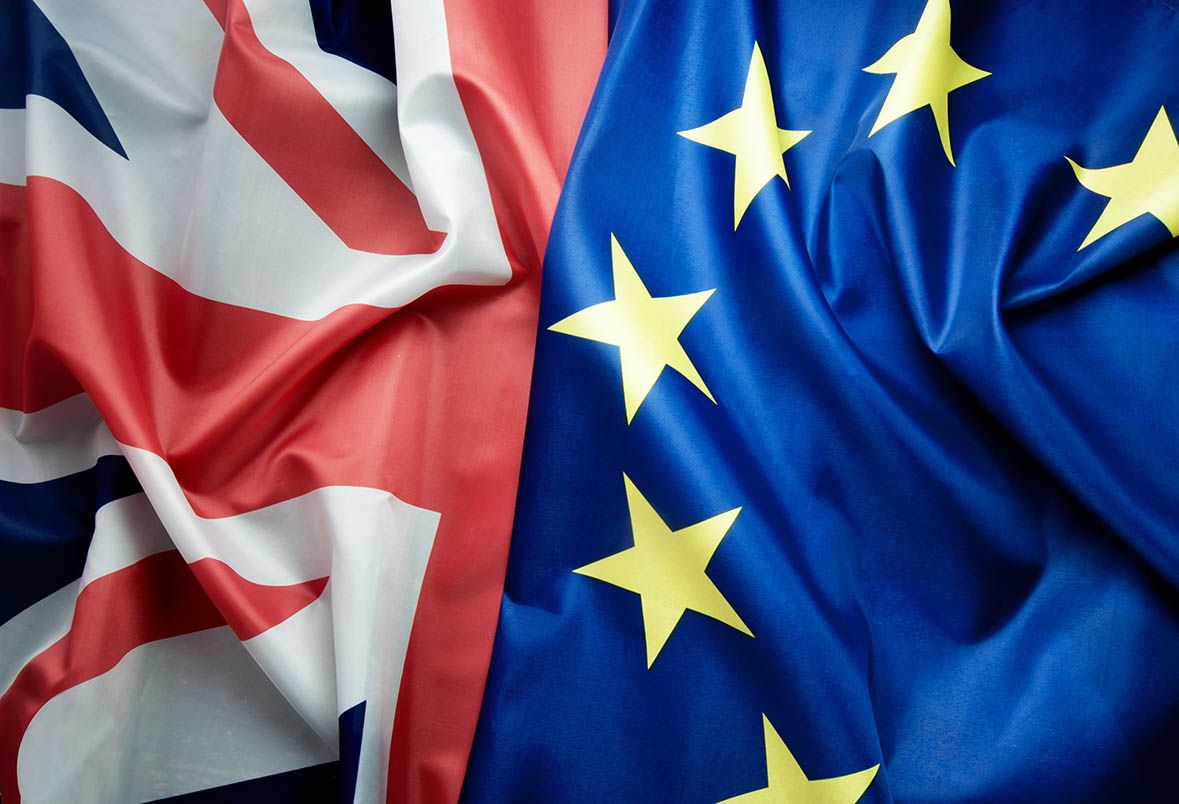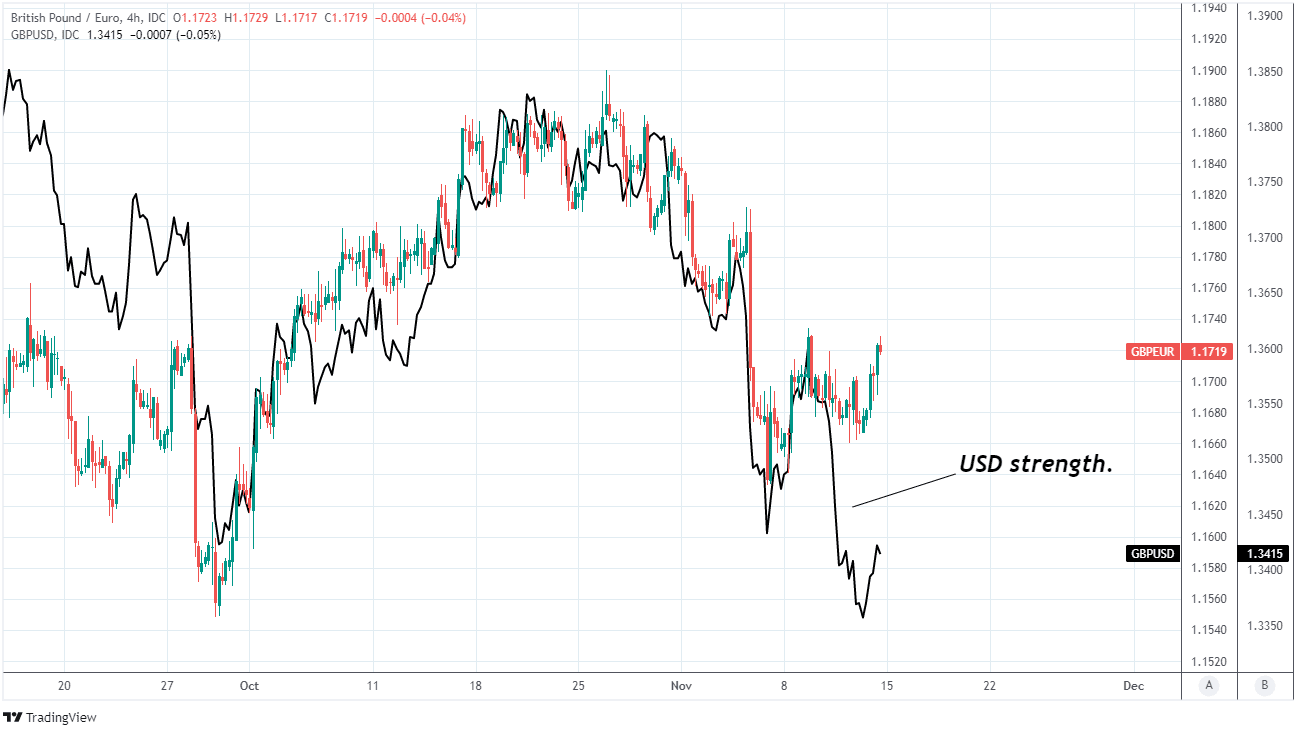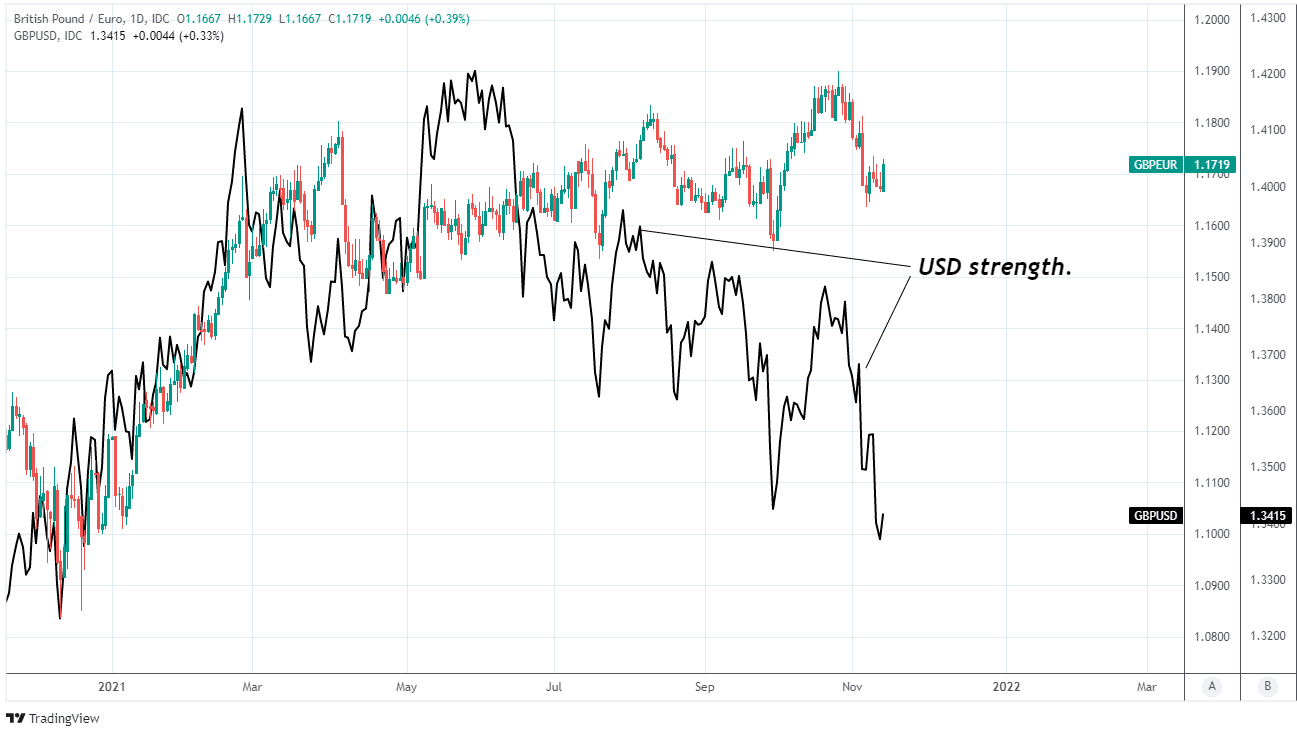Pound / Euro Rate Week Ahead Forecast: Eyeing Foothold on 1.17 as Data Deluge Looms
- Written by: James Skinner
- GBP/EUR builds support above 1.1650
- Looking to recover foothold on 1.1700
- With UK, Eurozone data deluge ahead
- BoE, jobs & inflation data key for GBP
- EUR eyeing Q3 EZ GDP & ECB speech

Image © Adobe Images
The Pound to Euro exchange rate has begun to pare early November losses and could attempt to regain a toehold above 1.17 over the coming days, although it must navigate an important Bank of England (BoE) and litany of key UK economic figures, not to mention a busy Eurozone agenda too.
Sterling found support around the 1.1650 area against the Euro last week and had climbed tepidly above 1.17 by Friday’s close in a tentative effort to pare back losses that were sustained following this month’s mispriced BoE monetary policy decision, which was aided by a small decline in the Euro.
Gains came after Sterling benefited from what appeared to be profit-taking in Dollar exchange rates, which did little to help the single currency after the Netherlands and a province in Austria announced plans to return to a partial form of ‘lockdown’ over rising coronavirus infections, helping to put GBP/EUR back onto its front foot.
“Given the imminence of Bank of England tightening, we think EUR/GBP will make its way back to 0.8500 [GBP/EUR 1.1764] by year-end. In the shorter-run, we’ll keep an eye on whether the pair will hold below the 0.8580 200-day moving average resistance [GBP/EUR above 1.1629] in spite of intensifying Brexit noise,” says Francesco Pesole, a strategist at ING, in a Friday note.
The Pound to Euro rate could attempt to solidify a toehold above 1.17 this week if cross channel economic developments permit it, and the market might be relatively quick to reveal whether that will be the case too.
Monday’s 14:00 appearance by BoE Governor Andrew Bailey and fellow members of the Monetary Policy Committee before the Treasury Select Committee in parliament is the first in a series of key events in the UK calendar.
Above: Pound-to-Euro exchange rate shown at 4-hour intervals with GBP/USD.
- GBP/EUR rates at publication:
Spot: 1.1724 - High street bank rates (indicative band): 1.1414-1.1470
- Payment specialist rates (indicative band): 1.1618-1.1665
- Find out about specialist rates, here
- Or, set up an exchange rate alert, here
The Monetary Policy Report hearing will be closely watched for clues or clarity about the likely timing of an initial increase in Bank Rate from the record low of 0.1% set at the onset of the coronavirus crisis after investors misinterpreted the BoE ahead of November’s meeting, leading to a punishing sell-off in Sterling exchange rates.
“The bottom line seems to be that the market is still expecting the BoE to take action in the face of high actual and expected inflation, and is simply waiting to see employment data due for release ahead of the next MPC on 16 Dec before pulling the trigger,” says Shahab Jalinoos, head of trading strategy at Credit Suisse.
“We had argued that a retracement above 0.8600 [GBP/EUR below 1.1627] would need to be seen before selling the pair offered value. The price action in the aftermath of the MPC seems to be bearing out this analysis thus far, with the pair just failing to breach 0.8600 last week before settling back down toward 0.8550,” Jalinoos said in a note to clients last week.
The BoE’s September and November policy decisions made clear that a steady withdrawal of last year’s interest rate cuts is likely for the coming ahead and indicated that this could begin in February, if not sooner in December.
{wbamp-hide start}
{wbamp-hide end}{wbamp-show start}{wbamp-show end}
“Note that GDP growth in Q3 undershot the 1.5% rate expected by the MPC in last week’s Monetary Policy Report. The Committee will have October's GDP data to hand when it makes its next decision on December 16, and it has emphasised the importance of labour market developments for the timing of its first rate hike. Nonetheless, Q3’s data have increased modestly our conviction that the MPC will wait until February to hike rates to 0.25%,” says Samuel Tombs, chief UK economist at Pantheon Macroeconomics.
Pricing in the overnight-indexed-swap market implied on Friday a December Bank Rate of 0.18%, which is around halfway between the current level and that which would prevail following a non-standard 0.15% increase to 0.25%, meaning the Pound-to-Euro rate could be sensitive to MPC members’ responses to questions in parliament on Monday if they provide insight into whether December or February is more likely.
Monday’s hearing is followed by September’s unemployment rate and October’s new unemployment claims data at 07:00 on Tuesday, while October’s inflation and retail sales data are due at the same time on Wednesday and Thursday morning, which comes before the week wraps up on the UK side after BoE chief economist Huw Pill participates at 12:00 on Friday in a panel discussion at the Bristol Festival of Economics.
“The data on redundancy notifications suggest there has not been a large swathe of sackings in the run up to the end of the furlough scheme. And a survey by the ONS suggested that about 85% of the 1.1m people that suddenly came off the furlough as it ended on 30th September had returned to their jobs,” says Ruth Gregory, a senior UK economist at Capital Economics.
Above: Pound-to-Euro exchange rate shown at daily intervals with GBP/USD.
Secure a retail exchange rate that is between 3-5% stronger than offered by leading banks, learn more.
Tuesday’s labour data is arguably the most crucial for Sterling because the BoE has made clarity about the impact that September’s end of HM Treasury’s furlough scheme had on employment a prerequisite for prioritising curbing rising inflation risks in the UK by lifting Bank Rate.
However, between this and the other data some parts of the market may also be attentive to Brexit related discussions amid speculation suggesting Downing Street may somewhat controversially invoke a term in the EU withdrawal agreement that would lead to changes in the application of the overall agreement and a possible increase in tensions with Brussels.
“Our take: Until it happens – markets don’t care,” says Bipan Rai, North American head of FX strategy at CIBC Capital Markets, in a note last week.
The week isn’t purely a UK story for the Pound-to-Euro exchange rate however, given that Tuesday offers the first estimate of Eurozone GDP growth for the third quarter, which consensus suggests will reveal a solid quarter-on-quarter growth rate of 2%.
GDP data is followed on Friday by opening remarks from President Christine Lagarde at the Frankfurt European Banking Congress around 08:00 while in between then the market could be attentive to coronavirus related newsflow emerging from the continent after last Friday's shift back toward earlier damaging containment efforts.
“Near-term downside risks stemming from the manufacturing slowdown and rising COVID-19 cases loom. However, the medium-term outlook remains healthy, underpinned by expectations of supply-side constraints easing, wage growth resuming and underlying inflation strengthening in 2022-23,” says Iaroslav Shelepko, an economist at Barclays.







